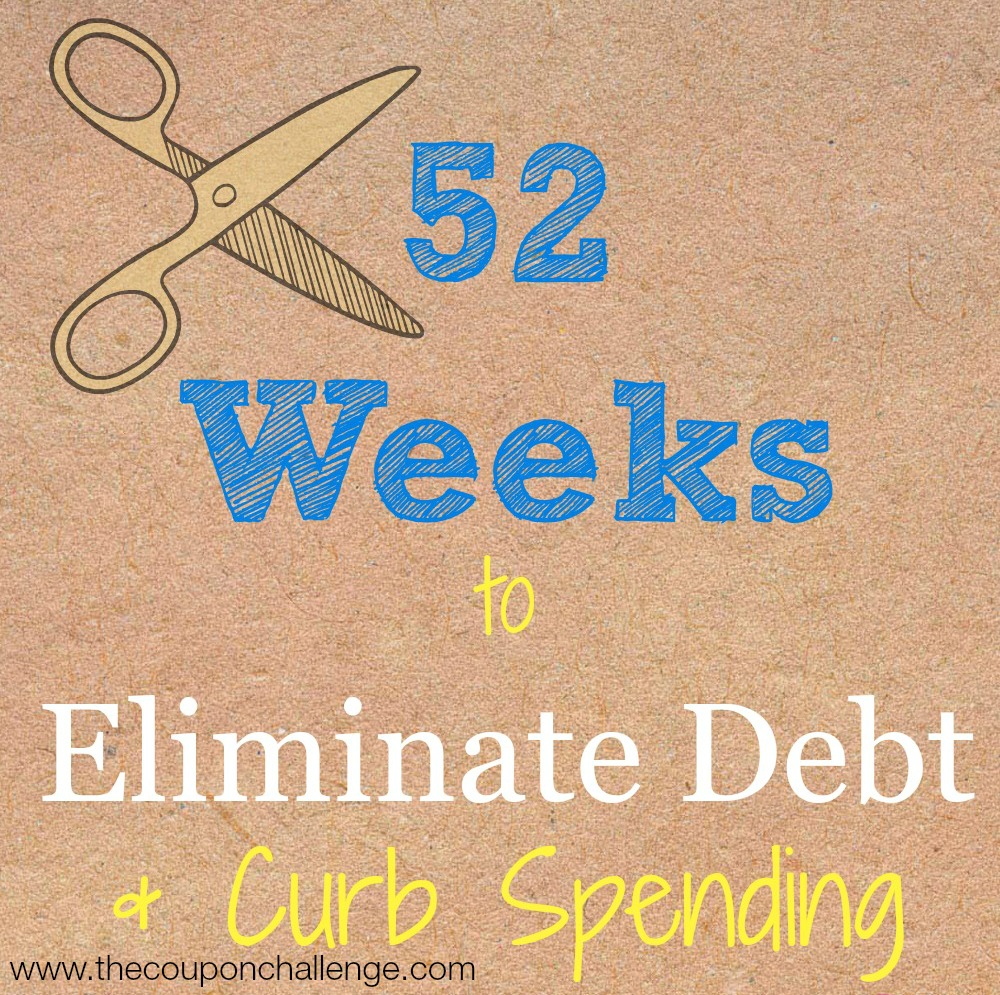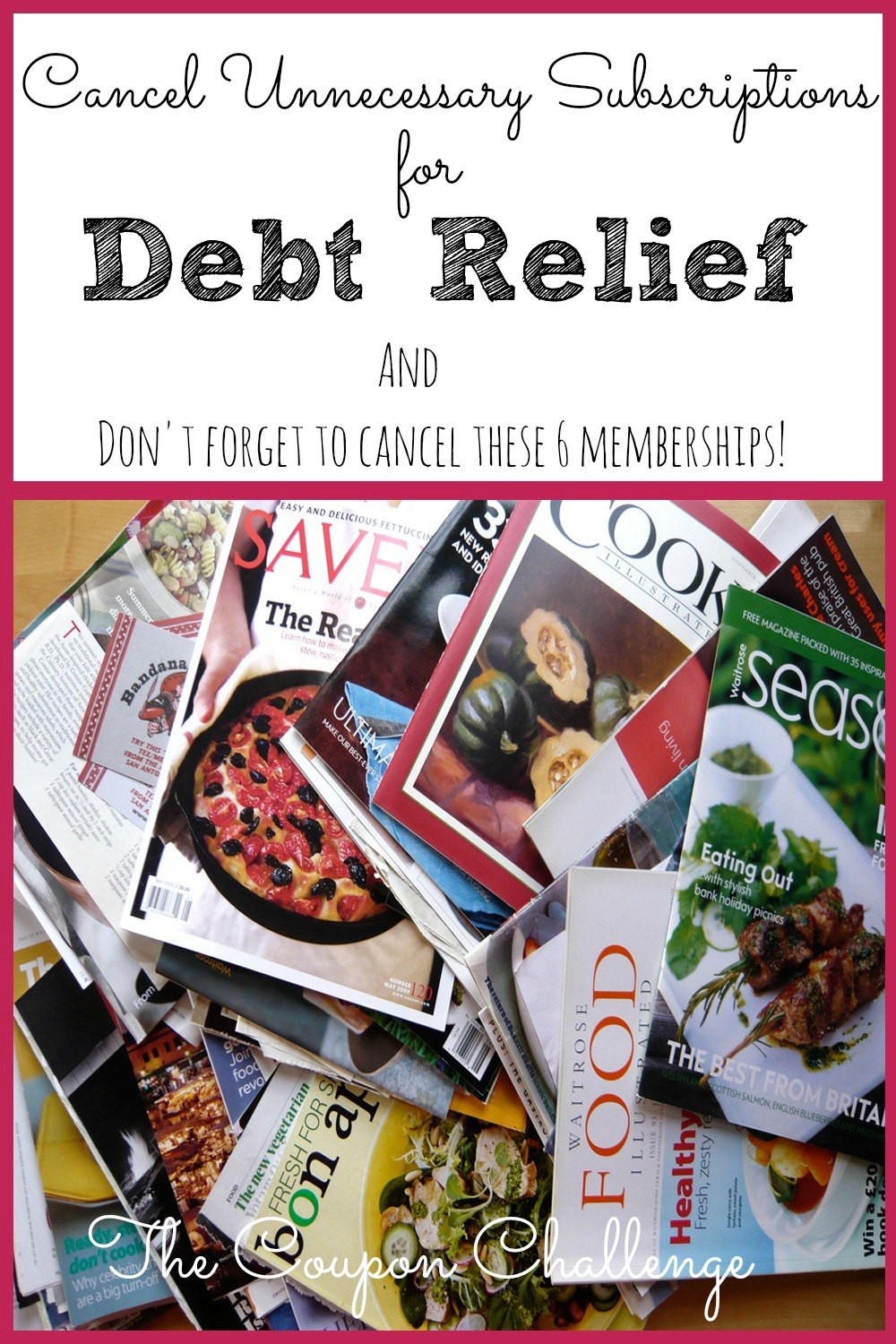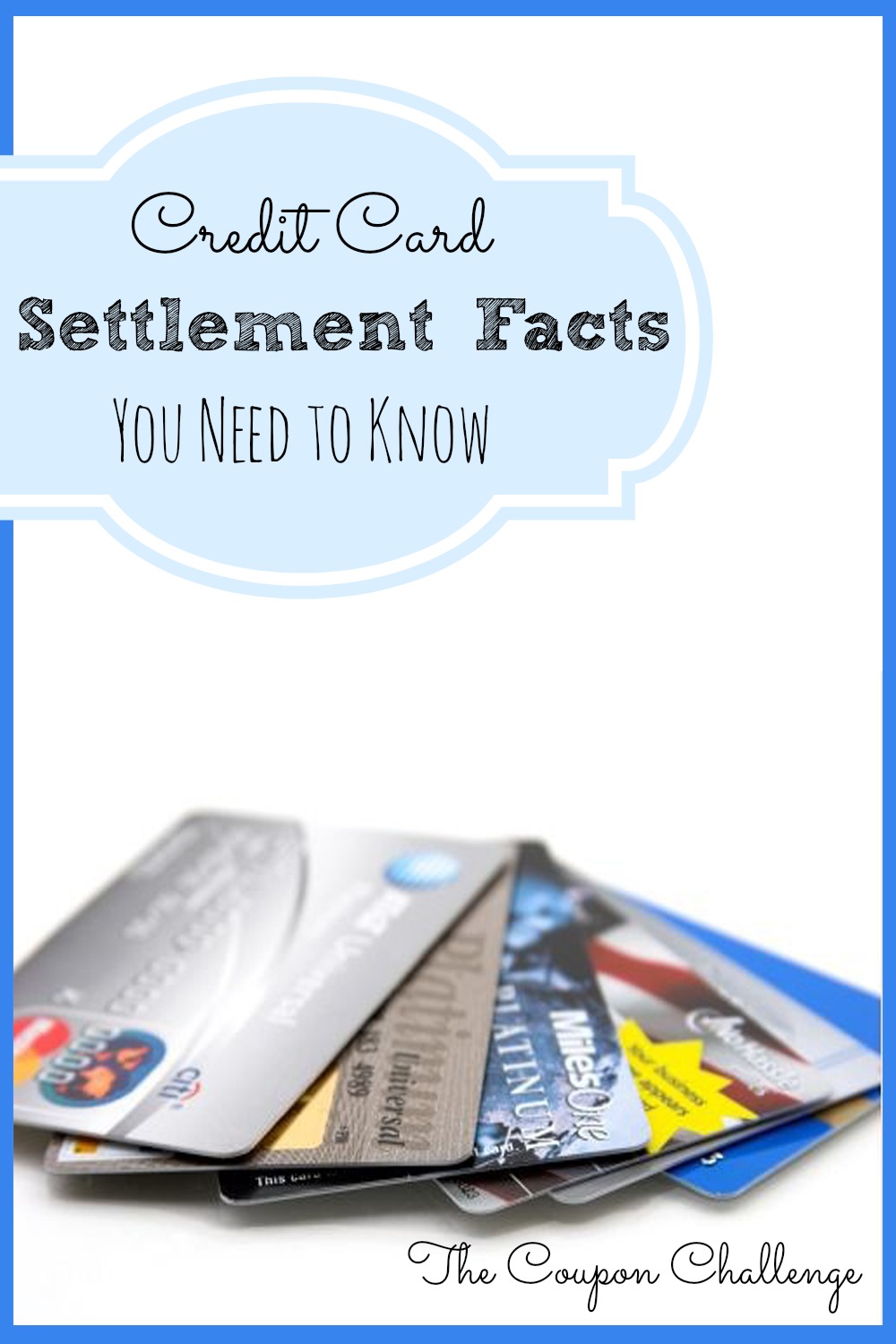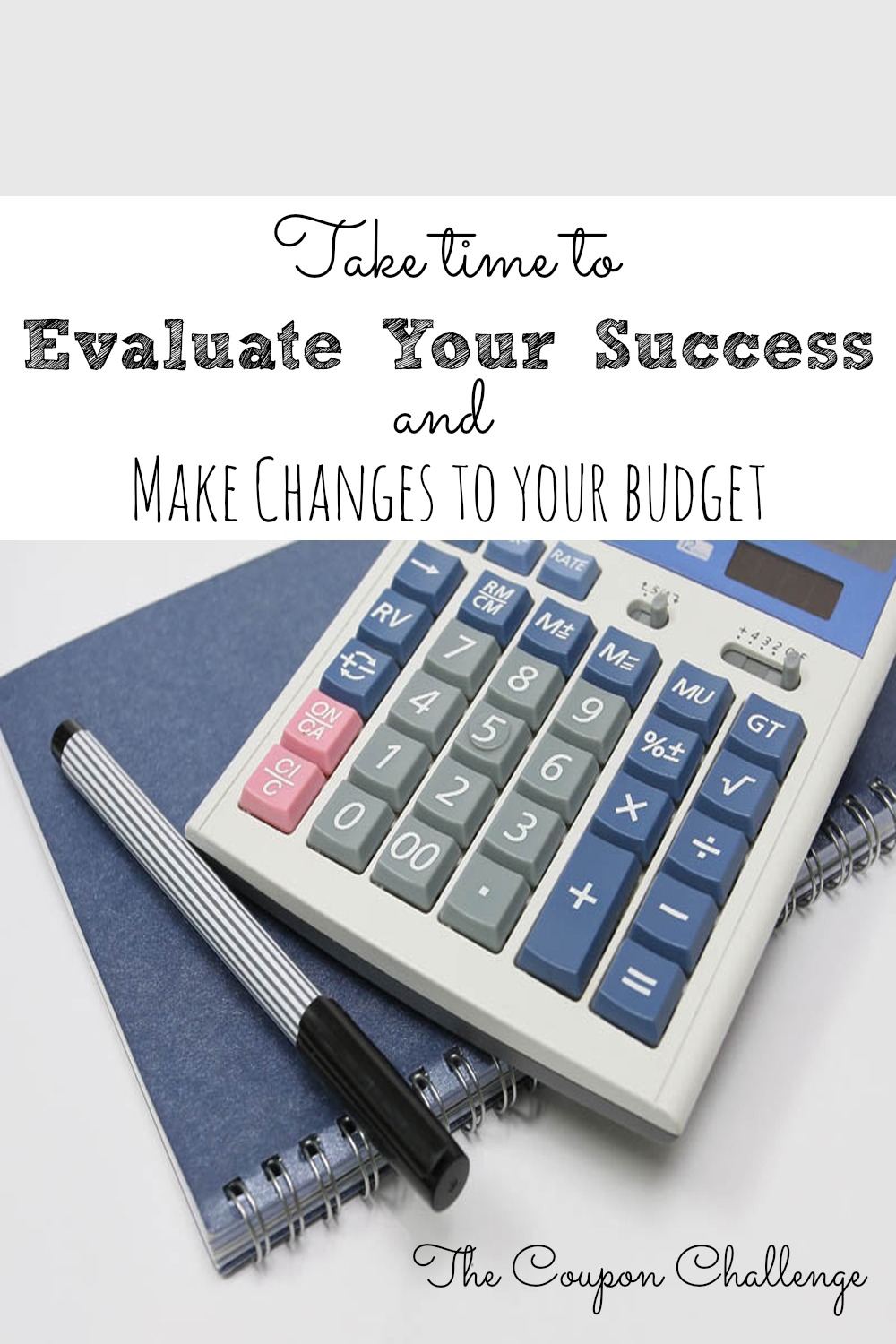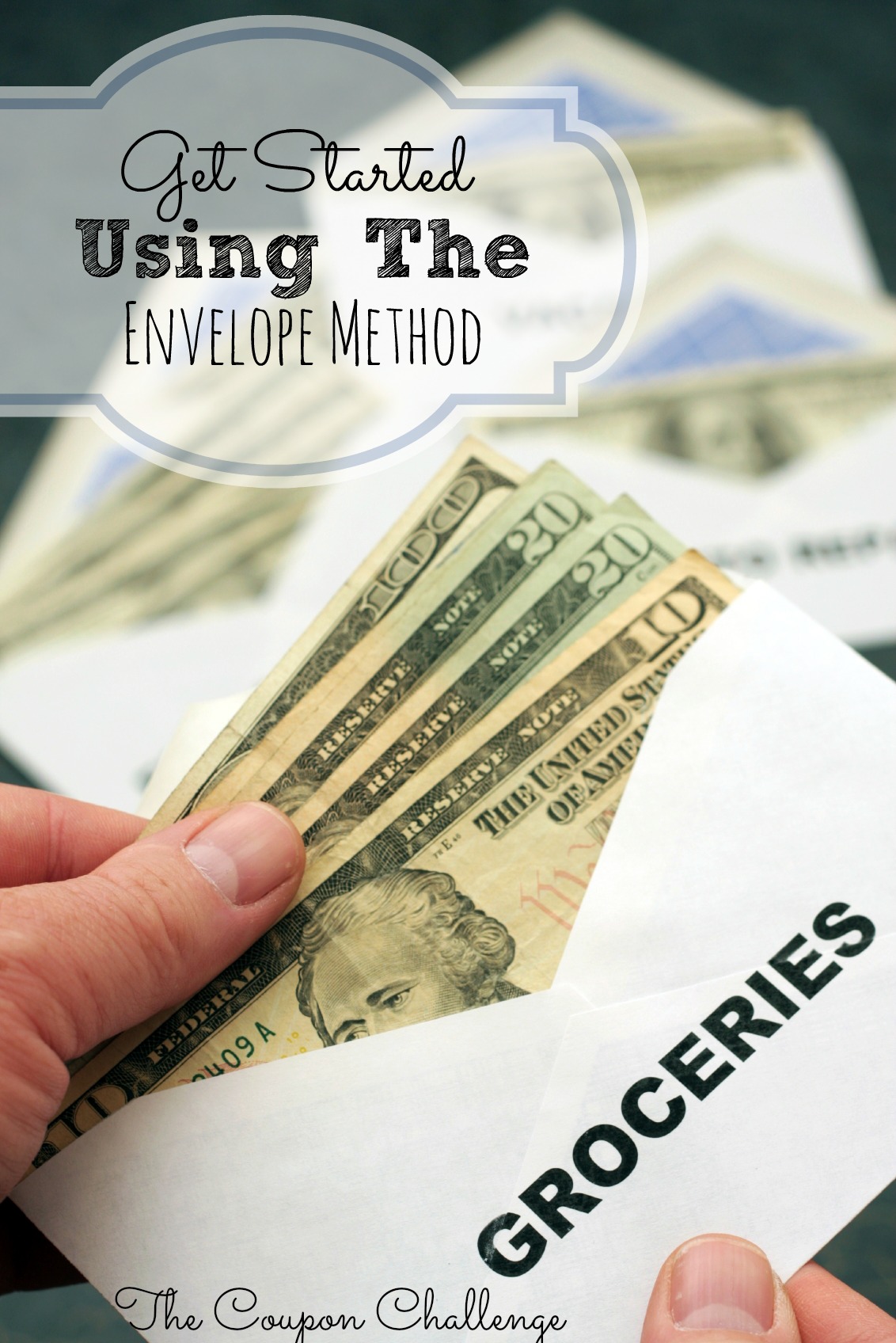You are reading Week 26 of 52 Weeks to Eliminate Debt & Curb Spending. Please read the overview here to learn more about the series & get your FREE financial planner. If you just joined us, please start with week 1.
When you are working to eliminate debt, you have to literally think about everything in your list of expenses. One quick way to create a few hundred dollars in your budget is to cancel unnecessary subscriptions. There are many things that we pay for each year and could easily live without. This week we are going to focus on going over some of the common subscriptions you can do without, and a few suggestions on alternatives.
Don’t Forget to Cancel These 7 Memberships:
- Cancel your gym membership. Instead of paying $20-$50 per month for a gym membership, invest in a few items to have at home to help you get in shape. Walk, jog or ride bikes for cardio. Spend the $20-$50 you will save the first month on some simple hand weights and a workout DVD for strength training.– Small 5 – 10 lb hand weights are perfect for most workout routines.
— Jillian Michaels DVD’s are popular and inexpensive
— Kettlebells are all the rage right now and you can find many videos on youtube for free.
— Read this article on 5 Easy Home Workout Routines Without Weights. - Cancel magazine subscriptions. Many magazines are available for free or discounted in an digital version. If not, head out to your local library to read your favorite magazines each month. You can also ask for magazine subscriptions for gifts from friends and close family when your birthday or the holidays arrive.If you subscribe to All You Magazine for the coupons – order or renew during the promotions!
- Cancel online site subscriptions. Occasionally there are clubs and sites online that require a monthly or annual fee to participate in. Some of these are for work or education like kids learning sites. Evaluate the ones that truly offer a benefit. If not, let them go.Even $5 a month adds up to $60 a year. With 4 or 5 subscriptions per month at that rate you have created $240 in income for the year. That is a utility bill, small car payment, insurance or a weekend getaway. Don’t forget about the annual subscriptions that you forgot even existed!
- Cancel auto-renewal policies on subscriptions. Sometimes you don’t think about your subscriptions because they auto-renew via your credit card once a year. Go through your subscriptions and cancel any that auto-renew, so you aren’t charged before you get a chance to cancel the service. Are you paying $4.95 per year for something you don’t even use?
- Cancel monthly subscription box services. There are monthly subscription box services for everything from kids toys to makeup. These little monthly expense of $10-$30 can add up quickly and create up to $1000 in expenses over the course of the year. Cancel these and look for lower cost alternatives in stores.
- Cancel newspaper subscription. Yes, people do still buy newspapers. If you are only using them for the coupons on Sunday’s, then negotiate for a Sunday only service. If not, look into the digital version online. Most newspapers have a discount for digital subscriptions or even offer the paper online for free.
You could come up with over $1000 in money in under an hour just by choosing to cancel unnecessary subscriptions. This is a great plan to help you get rid of debt this year.
We were paying over $80 per month for a YMCA membership. While I loved my Y, I couldn’t see spending the money when I could walk outside instead of on the treadmill and add $80 to my credit card debt.
Week 26 Challenge:
Go through all your monthly subscription expenses and see what you can let go. Spend an hour on the phone or online cancelling subscriptions or auto-renewals.
Disclosure: I am not a financial adviser nor do I have formal financial training. All articles are for informational purposes only and should not be interpreted as financial advice or consultation. Please consult your account and/or financial adviser before making changes to your finances. All situations are different, so please consult a professional to determine your individual needs.
